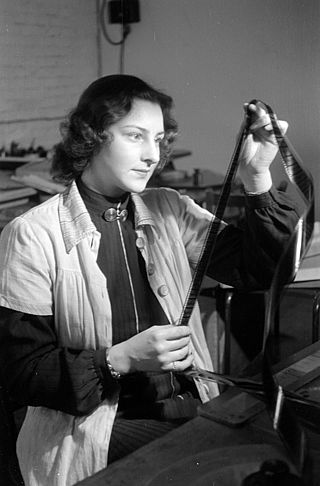
Film editing is both a creative and a technical part of the post-production process of filmmaking. The term is derived from the traditional process of working with film which increasingly involves the use of digital technology. When putting together some sort of video composition, typically, you would need a collection of shots and footages that vary from one another. The act of adjusting the shots you have already taken, and turning them into something new is known as film editing.

William Clark Gable was an American film actor. Often referred to as the "King of Hollywood", he had roles in more than 60 films in a variety of genres during a career that lasted 37 years, three decades of which was as a leading man. He was named the seventh greatest male movie star of classic American cinema by the American Film Institute.
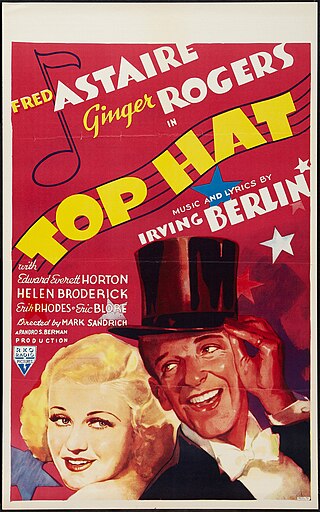
Top Hat is a 1935 American musical screwball comedy film in which Fred Astaire plays an American tap dancer named Jerry Travers, who comes to London to star in a show produced by Horace Hardwick. He meets and attempts to impress Dale Tremont to win her affection. The film also features Eric Blore as Hardwick's valet Bates, Erik Rhodes as Alberto Beddini, a fashion designer and rival for Dale's affections, and Helen Broderick as Hardwick's long-suffering wife Madge.

Ginger Rogers was an American actress, dancer and singer during the Golden Age of Hollywood. She won an Academy Award for Best Actress for her starring role in Kitty Foyle (1940), and performed during the 1930s in RKO's musical films with Fred Astaire. Her career continued on stage, radio and television throughout much of the 20th century.

Fred Astaire was an American dancer, actor, singer, musician, choreographer, and presenter, whose career in stage, film, and television spanned 76 years. He is widely regarded as the "greatest popular-music dancer of all time" and received numerous accolades, including an Honorary Academy Award, three Primetime Emmy Awards, a BAFTA Award, two Golden Globe Awards, and a Grammy Award.
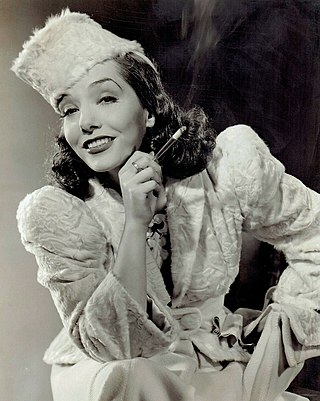
María Guadalupe "Lupe" Villalobos Vélez was a Mexican actress, singer, and dancer during the Golden Age of Hollywood cinema.

Eleanor Torrey Powell was an American dancer and actress. Best remembered for her tap dance numbers in musical films in the 1930s and 1940s, she was one of Metro-Goldwyn-Mayer's top dancing stars during the Golden Age of Hollywood. Powell appeared in vaudeville, on Broadway, and most prominently, in a series of movie musical vehicles tailored especially to showcase her dance talents, including Born to Dance (1936), Broadway Melody of 1938 (1937), Rosalie (1937), and Broadway Melody of 1940 (1940). She retired from films in the mid-1940s but resurfaced for the occasional specialty dance scene in films such as Thousands Cheer. In the 1950s she hosted a Christian children's TV show and eventually headlined a successful nightclub act in Las Vegas. She died from cancer at 69. Powell is known as one of the most versatile and athletic female dancers of the Hollywood studio era.

Frank Borzage was an American film director and actor. He was the first person to win the Academy Award for Best Director for his film 7th Heaven (1927) at the 1st Academy Awards.

Virginia Mayo was an American actress and dancer. She was in a series of popular comedy films with Danny Kaye and was Warner Bros.' biggest box-office draw in the late 1940s. She also co-starred in the 1946 Oscar-winning movie The Best Years of Our Lives.

Charles Van Dell Johnson was an American actor and dancer. He had a prolific career in film, television, theatre and radio, which spanned over 50 years, between 1940 and 1992. He was a major star at Metro-Goldwyn-Mayer during and after World War II, known for his upbeat and "all-American" screen persona, often playing young military servicemen, or in musicals.

Waltzes from Vienna is a 1934 British biographical film directed by Alfred Hitchcock, sometimes known as Strauss' Great Waltz. It was part of the cycle of operetta films made in Britain during the 1930s.

You Were Never Lovelier is a 1942 American musical romantic comedy film directed by William A. Seiter and starring Fred Astaire and Rita Hayworth. The supporting cast also features Adolphe Menjou, Xavier Cugat and Adele Mara. The music was composed by Jerome Kern and the lyrics by Johnny Mercer. The picture was released by Columbia Pictures and includes the elaborate "Shorty George" and romantic "I'm Old Fashioned" song and dance sequences.

The Belle of New York is a 1952 Metro-Goldwyn-Mayer Hollywood musical comedy film set in New York City circa 1900 and stars Fred Astaire, Vera-Ellen, Alice Pearce, Marjorie Main, Gale Robbins, and Keenan Wynn, with music by Harry Warren and lyrics by Johnny Mercer. The film was directed by Charles Walters.
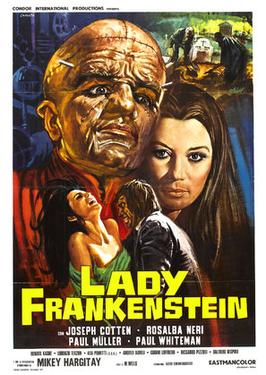
Lady Frankenstein is a 1971 Italian horror film directed by Mel Welles and written by Edward di Lorenzo. It stars Rosalba Neri, Joseph Cotten, Mickey Hargitay and Paul Müller.
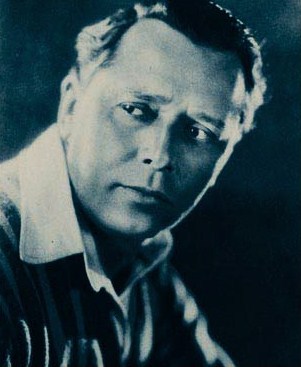
Theodore Kosloff was a Russian-born ballet dancer, choreographer, and film and stage actor. He was occasionally credited as Theodor Kosloff.
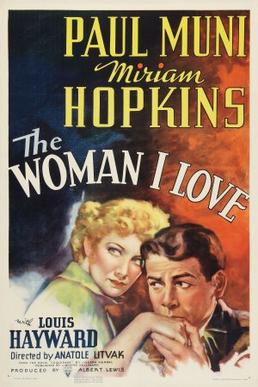
The Woman I Love is a 1937 American drama film about a romantic triangle involving two World War I fighter pilots and the wife of one of them. It stars Paul Muni, Miriam Hopkins, and Louis Hayward. Anatole Litvak's Hollywood directorial debut was a remake of his French film The Crew, which was, in turn, based on Joseph Kessel's 1923 novel of the same name.
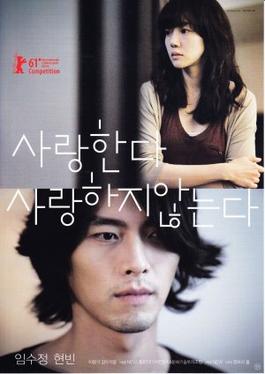
Come Rain, Come Shine is a 2011 South Korean film by Lee Yoon-ki. A young woman informs her husband of five years that she is leaving him for another man, but the husband remains calm and even helps her pack. The experimental film traces in real-time parts of their last three hours together while the wife prepares to move out. The film premiered in competition at the 61st Berlin International Film Festival in 2011.

Love's Whirlpool is a 2014 Japanese erotic romantic drama film directed by Daisuke Miura. The film was adapted from Miura's own award-winning play of the same name, and portrays a group of men and women who pay to come to a common location to take part in organized promiscuous sexual activity. It was released in Japan on March 1, 2014.

The Cutting Edge film series consists of American sports-romance films, including one theatrical film and three made-for-television movies which were later released straight-to-home video media. Based on characters and an original story written by Tony Gilroy, the plot centers around the unlikely pairing of differing ice sports athletes, for Olympic title pairs figure skating. Beginning as nothing more than argumentative team collaborations, the featured couples become romantically involved.
Courtship practices in the United States changed gradually throughout its history. The transition from primarily rural colonies to cities and the expansion across the continent with major waves of immigration, accompanied by developments in transportation, communication, education, industrialization, and the economy, contributed to changes over time in the national culture that influenced how young people met, interacted, and married.



















